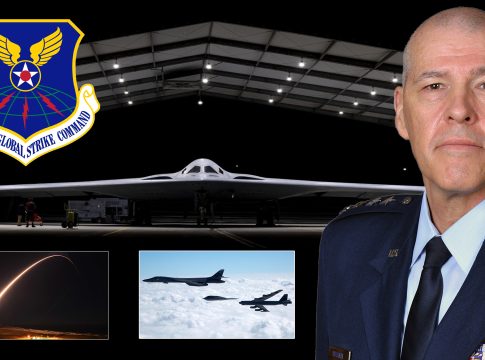Reimagining Deterrence: AI’s Role in Modern Nuclear Command
The landscape of nuclear deterrence is evolving dramatically, integrating advanced technologies like artificial intelligence (AI) to bolster security in an ever-more complex global environment. General Thomas A. Bussiere, head of the Air Force Global Strike Command (AFGSC), recently shed light on this transformation, discussing how AI can enhance strategic nuclear operations while emphasizing the necessity of human oversight.
The Modern Nuclear Challenge
For decades, the United States has relied on a bipolar deterrence model, primarily geared toward countering threats from a singular nuclear adversary. As General Bussiere noted, the landscape now involves multiple nuclear-armed states, each with unique doctrines and thresholds for engagement. This diversification of threats necessitates not only new hardware but also fresh perspectives on deterrence strategies.
AI in Intelligence Processing
One of the most promising applications of AI lies in its ability to process enormous volumes of intelligence data. As military decision-making becomes increasingly complex, the capacity to swiftly sift through and analyze data is crucial. AI can help distill essential information, allowing commanders to make informed decisions in high-pressure situations more effectively.
General Bussiere highlighted how AI could transform the fabric of nuclear command, control, and communications (NC3), facilitating agile communication pathways that enhance operational readiness. With AI assisting in the analysis of diverse communication channels—be it satellite, airborne, or cyber—military strategists can ensure that critical lines of communication remain intact.
The Human Element Remains Crucial
Despite these advancements, Bussiere emphasizes that AI will not supplant human decision-making within nuclear operations. Given the stakes involved, the military continues to prioritize human judgment in critical scenarios. “Artificial intelligence offers substantial opportunities, but the decisiveness of human involvement remains at the core of nuclear operations,” he stated.
This cautious approach mirrors sentiments from past discussions about AI’s growing role in high-stakes environments. A comparison can be drawn to the 1983 film WarGames, where an AI nearly triggers nuclear disaster due to a misinterpretation of data. Such portrayals serve as poignant reminders of the importance of human oversight, particularly when lives hang in the balance.
Looking Ahead: AI’s Expanding Role
As AI technologies continue to advance, there are identifiable areas ripe for integration within the military realm. General Bussiere noted that while AI is unlikely to directly influence critical nuclear decision-making today, its role in data analysis and communication could expand significantly in the future. The challenge will be ensuring that such technologies complement the irreplaceable value of human insight in nuclear strategy.
In conclusion, the integration of AI into nuclear command holds the potential to revolutionize how the military prepares and responds to threats. While technologies advance, the human touch remains indispensable—a dual focus that will define the next chapter in nuclear deterrence. As AI plays a larger role in strategic military operations, the balance between technological innovation and human decision-making will be crucial for safeguarding the world.

Writes about personal finance, side hustles, gadgets, and tech innovation.
Bio: Priya specializes in making complex financial and tech topics easy to digest, with experience in fintech and consumer reviews.

